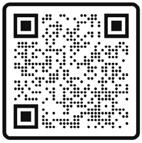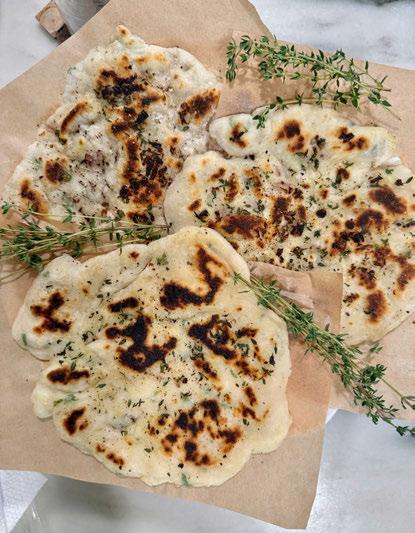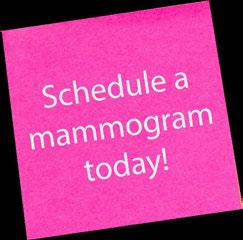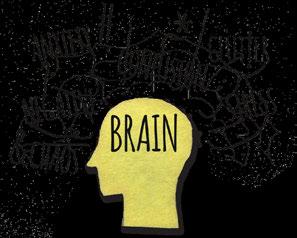










As we come into the fall, important details for our Medicare and Marketplace friends.
WHEN:
Starting this week for Medicare Open Enrollment:
• Annual Notice of Change - “ANOC’s”
• October 1- 14: “Window Shopping” for Medicare Advantage and RX plans for 2025. (Review your options.)
• October 15: Shop for a 2025 Advantage or Rx Plan (October 15-December 7).
• Review your Medigap plan or change to a Medicare Advantage plan.
• Starting November 1st for ACA/Marketplace Plans
• November 1 – December 15: Open Enrollment for ACA/ Marketplace plans for a January 1, 2025 efective date.
WHY?
• We are seeing big changes in Medicare Rx coverage. For RX prescriptions - $ 2,000 annual maximum out of pocket and option to pay that big deductible over 12 months.
• More and better Advantage plans : Special plans for heart and diabetic folks. Giveback of Part B Premium.
• New Medigap (Supplement) options.
• For those under 65 - Medicaid expansion in NC and options if you are on group insurance plans.
WHAT is most important to YOU?
• Your doctors in network?
• Increasing insurance premiums?
• Defned costs for medical services?
• Annual out of pocket expenses ?
• Dental? Hearing? Vision?
• Support to navigate the healthcare system?
• Premium subsidy if on a Marketplace plan?
WHERE to fnd answers to your questions.
• Medicare.gov
• Healthcare.gov
• NC SHIP (State Health Insurance Assistance Programs).
• Work with licensed independent agents or brokers.

We are trained and certifed by CMS as well as each insurance company. As fduciaries, we are required to guide you to the most suitable plan to meet your needs. And – we are Experienced .
I’m 25 years as an agent. Wrote my frst Medicare plan in 1999. Was present for the rollout of Medicare RX in 2005 with the infamous doughnut hole. I have seen ObamaCare from day one. I have known Medicare from the inside out since 2018. Most Importantly, I have worked with thousands of folks over all these many years.
It is ALL about YOU! YOUR Needs, Budget and Values. And the coverage that best suits YOU! For today, next year and all the years and changes to follow. YOU!

Working for You - 25 Years - Experienced - Dedicated


YOUR CIRCUMSTANCES, HOME TRANSITIONS CAN BE STRESSFUL. Our experienced team has helped thousands of area clients pack, move, and liquidate furnishings, household items, jewelry, and artwork. Whether you’re moving, settling an estate, or just want to streamline your life, we can make the process easier. 75 FAIRVIEW ROAD in Biltmore Village 828.575.2509 option 2
at
2–4 16–18 SALE DAYS | THURSDAY–SATURDAY 10–4:30 SALE-WEEK PREVIEWS | WEDNESDAY 1–3
WNC Bridge Foundation Estate Sales and Thrift Stores are friendly, upbeat places to volunteer. Folks of all walks and ages are making a positive impact in our community. Choose your own adventure! Interact with customers and clients by packing estates, stocking shelves, ringing up purchases. Or work in the wings sorting donations and organizing housewares, rugs, furniture, art, linens, clothing, and other hidden treasures.
Determine your own schedule—a couple of hours, a couple of days, or more.
WANT TO KNOW MORE ABOUT VOLUNTEE RING? Call 828.277.4888 or go to WNCbridge.org and click on the Volunteer link.

Step 1: Prepare the Ingredients
1. Dice the onion and green bell pepper.
2. Mince the garlic cloves.
Step 2: Cook the Ground Beef
1. Heat the olive oil in a large pot over medium-high heat.
1 lb ground beef
1 large onion, diced
1 green bell pepper, diced
2 cloves garlic, minced
2 cans (15 oz each) kidney beans, drained & rinsed
1 can (28 oz) diced tomatoes
1 can (6 oz) tomato paste
1 cup beef broth
2 tbsp chili powder
1 tsp ground cumin
1 tsp paprika
1/2 tsp cayenne pepper (optional, for extra heat)
Salt and pepper to taste
1 tbsp olive oil
• Shredded cheddar cheese
• Sour cream
• Chopped green onions
• Fresh cilantro
• Sliced jalapeños
• Tortilla chips
2. Add the ground beef and cook until browned, breaking it up with a wooden spoon as it cooks.
Step 3: Sauté the Vegetables
1. Once the beef is browned, add the diced onion and green bell pepper to the pot.
2. Cook, stirring occasionally, until the vegetables are sof, about 5-7 minutes.
3. Add the minced garlic and cook for another 1-2 minutes.
Step 4: Add the Seasonings
1. Stir in the chili powder, ground cumin, paprika, and cayenne pepper.
2. Season with salt and pepper to taste.
3. Stir well to evenly coat the beef and vegetables with the spices.
Step 5: Add the Remaining Ingredients
1. Add the drained kidney beans, diced tomatoes (with their juice), tomato paste, and beef broth to the pot.
2. Stir until all ingredients are well combined.
Step 6: Simmer the Chili
1. Bring the mixture to a boil, then reduce the heat to low.
2. Cover the pot and simmer for at least 30 minutes, stirring occasionally. For best results, simmer for 1-2 hours to allow favors to meld.
Step 7: Adjust Seasonings
1. Taste the chili and adjust seasonings as needed, adding more salt, pepper, or spices to suit your preference.
Step 8: Serve and Enjoy
1. Ladle the chili into bowls and top with your favorite toppings such as shredded cheddar cheese, sour cream, chopped green onions, fresh cilantro, sliced jalapeños, or tortilla chips.
2. Serve hot and enjoy!
Tis classic chili recipe is perfect for a cozy night in or a gathering with friends and family. It’s hearty, favorful, and can be customized to match your taste preferences. Enjoy!





Adopting a shelter dog brings numerous benefts that go beyond gaining a loyal companion. It’s a decision that positively impacts the lives of both the adopted dog and the adopter. Here are some compelling reasons to consider bringing a shelter dog into your home.
One of the most remarkable benefts of adopting a shelter dog is that you are saving a life. Every year, millions of dogs end up in shelters due to various circumstances, such as abandonment or the inability of previous owners to care for them. By adopting from a shelter, you provide a loving home to a dog in need and free up space for another animal to be rescued.
Research has shown that owning a dog can signifcantly improve your mental and physical well-being. Dogs require regular exercise, which means daily walks and playtime that help keep you active. Additionally, the companionship and unconditional love that dogs ofer can reduce stress, anxiety, and feelings of loneliness. Te bond you form with your shelter dog can lead to a happier and healthier lifestyle for both of you.
Adopting a shelter dog is ofen more cost-efective than purchasing one from a breeder or pet store. Most shelters charge a nominal adoption fee that usually includes vaccinations, spaying or neutering, and a basic health checkup. Tis fee is signifcantly lower than the cost of buying a dog and covering these medical expenses out of pocket.
By adopting from a shelter, you are taking a stand against unethical breeding practices and puppy mills. Many commercial breeding facilities prioritize proft over the welfare of the animals, leading to poor living conditions and health issues for the dogs. Choosing to adopt from a shelter supports humane treatment of animals and encourages responsible pet ownership.
Shelters have dogs of all breeds, ages, and temperaments, so you’re likely to fnd a dog that fts your lifestyle and preferences. Shelter staf ofen have a good understanding of each dog’s personality and needs, helping you fnd a match that aligns with your home environment and activity level. Whether you’re looking for a playful puppy or a calm senior dog, there’s a shelter dog out there waiting for you.
Adopting a shelter dog is a rewarding experience that ofers countless benefts. It’s a compassionate choice that can bring joy, companionship, and a sense of fulfllment to your life. If you’re considering adding a furry friend to your family, look no further than your local animal shelter.

Mary Taylor is the rare female in the wine industry who does it all. She is an importer and serves as a negociant buying grapes, juice or wines from growers directly, then producing her own wines.
While Mary is passionate about Old World wine, she knows the labels can be confusing so she decided to do something about it! Mary told Decanter magazine: “People are really confused in the U.S. between place and grape, so I want them to easily identify my brand and let that guide them to try a number of wines they wouldn’t normally pick of a shelf.” Mary looks for “a true sense of place.” For Mary, this means local farmers who protect tradition and don’t bend to trends.
In addition to her entry level priced wines that explore “place,” her line of sparkling wines from around the world, Mary is also building women-run wine distribution companies with partners. To women, she says “stand frm, take serious initiative, defend other women, live loudly and know that there is no time for perfectionism.”
At Metro Wines, we have nine wines from Mary Taylor. Let’s take a look at three favorites.

By Gina Trippi
Finca El Molar is in the winemaking region of Manchuela. Tis high-altitude region is situated between two rivers and boasts a very sunny and dry climate while the area wind refreshes the night during ripeness. All Finca El Molar wines are certifed organic. 100% Bobal from 45 year old vines grown in limestone and loam soil. Intense red color, smooth body, red fruit aroma, fresh, and well-balanced tannins. Fermented in stainless steel. Only 12.5% ALC!
When the property was sold to the local Cardinal in 1576, he put up an old Latin sign that translates to “Here by conscience and wisdom all things are conducted.” Tis wine blends the fresh acidity of the “Anjou Blanc’s” limestone with the finty, richness of the estate’s classic style ofering a beautiful presentation of Anjou with honeyed notes of apricot giving way to a tangy mineral fnish. A classic “bistro wine” wine that you might imagine sharing on an evening in Paris paired with a goat-cheese salad or fsh in cream sauce. Just don’t serve it too cold, according to Mary, to avoid masking its full depth and aromatic complexity.
Citrus, Asian pear, Acacia honey, jasmine and a touch of sea salt grace the nose and palate with this charming frizzante. Lovely and fresh, the ‘frizzante’ element of the wine expresses itself as a light spritz in the glass. Pair this wine with ravioli and sea scallops, herbed mushrooms, tomato and basil salad and, especially, holiday Italian desserts such as almond cookies and cannelloni.

Thanksgiving is a cherished holiday in the United States, celebrated on the fourth Tursday of November each year. Its meaning is deeply rooted in history, tradition, and a spirit of gratitude. Te origins of Tanksgiving can be traced back to the early 17th century when Pilgrims and Native Americans came together to share a harvest feast. Tis initial gathering is ofen seen as a symbol of cooperation and mutual respect amongst diverse groups, setting the foundation for what Tanksgiving embodies today.
Te essence of Tanksgiving is gratitude. It is a time for individuals to refect on the blessings in their lives, from family and friends to health and prosperity. Te holiday encourages people to pause and appreciate the abundance they enjoy, fostering a sense of thankfulness that transcends material wealth. Tis refection is ofen shared with loved ones over a traditional meal, typically including turkey, stufng, cranberry sauce, and pumpkin pie, which have become staples of the Tanksgiving table.
Tanksgiving ofers a wonderful opportunity to engage in a variety of activities that bring family and friends closer together. One popular tradition is watching the Macy’s Tanksgiving Day Parade, either live or on television, as its
colorful foats and spirited performances set a festive tone for the holiday. Families ofen enjoy playing games, whether it’s a lively game of touch football in the yard or classic board games indoors. Another cherished activity is crafing decorations, such as making turkey-themed centerpieces or handprint crafs with children. Cooking and baking together also create special memories, allowing everyone to contribute to the Tanksgiving feast. As the day comes to a close, taking a leisurely walk to enjoy the crisp autumn air, or engaging in a group refection to share what each person is thankful for, can be a meaningful way to end the celebration.
Beyond personal gratitude, Tanksgiving also serves as a reminder of community and giving back. Many people take this opportunity to volunteer at local shelters or food banks, ensuring that those less fortunate can also partake in the joys of the holiday. It is a day that emphasizes the importance of generosity and empathy, reinforcing the idea that gratitude is most meaningful when shared. In essence, Tanksgiving is a celebration of unity, appreciation, and the enduring bonds that bring people together.
“When I started counting my blessings, my whole life turned around.” –Willie Nelson
Tanksgiving is a time for gratitude, family, and of course, indulgent feasting! Whether you’re hosting or attending, these delicious recipes will ensure your Tanksgiving table is one to remember.

1. CLASSIC ROAST TURKEY
Ingredients:
• 1 whole turkey (12-14 lbs)
• 1/2 cup unsalted butter, sofened
• Salt and pepper to taste
• Fresh herbs (sage, thyme, rosemary)
• 1 lemon, halved
• 1 onion, quartered
• 4 cups chicken broth
Instructions:
1. Preheat your oven to 325°F (165°C).
2. Rinse the turkey and pat it dry. Season the cavity with salt and pepper, then stuf with lemon halves and onion quarters.
3. Rub the sofened butter under the skin of the turkey, and season the skin with salt, pepper, and fresh herbs.
4. Place the turkey on a rack in a roasting pan, breast side up. Pour 2 cups of chicken broth in the bottom of the pan.
5. Roast the turkey, basting occasionally with pan juices, until a meat thermometer reads 165°F in the thickest part of the thigh, about 3-4 hours.
6. Remove from the oven, tent with foil, and let rest for 20-30 minutes before carving.
GARLIC
Ingredients:
• 3 lbs Yukon Gold potatoes, peeled and cubed
• 1 cup heavy cream
• 1/2 cup unsalted butter
• 4 cloves garlic, minced
• Salt and pepper to taste
Instructions:
1. Boil potatoes in a large pot of salted water until tender, about 15-20 minutes. Drain well.
2. In a small saucepan, heat cream, butter, and garlic over low heat until the butter melts.
3. Return potatoes to the pot, add the cream mixture, and mash until smooth and creamy.
4. Season with salt and pepper to taste.
Ingredients:
• 12 oz fresh cranberries
• 1 cup sugar
• 1 cup orange juice
• 1/4 cup water
• Zest of 1 orange
Instructions:
1. In a medium saucepan, combine cranberries, sugar, orange juice, water, and orange zest.
2. Cook over medium heat, stirring occasionally, until cranberries burst and the sauce thickens, about 10-15 minutes.
3 .Remove from heat and allow to cool before serving.
Ingredients:
• 2 lbs fresh green beans, trimmed
• 1 can (10.75 oz) cream of mushroom soup
• 1 cup milk
• 1 can (6 oz) French fried onions
• Salt and pepper to taste
Instructions:
1. Preheat your oven to 350°F (175°C).
2. Blanch green beans in boiling water for 3 minutes. Drain and transfer to a baking dish.
3. In a bowl, mix cream of mushroom soup, milk, salt, and pepper. Pour over green beans.
4. Sprinkle with half of the French fried onions.
5. Bake for 25 minutes. Top with remaining onions and bake for an additional 5 minutes.
Ingredients:
• 1 pie crust (store-bought or homemade)
• 2 cups pumpkin puree
• 1 can (12 oz) evaporated milk
• 3/4 cup sugar
• 2 eggs
• 1 tsp ground cinnamon
• 1/2 tsp ground ginger
• 1/4 tsp ground cloves
• 1/2 tsp salt
Instructions:

1. Preheat your oven to 425°F (220°C).
2. In a large bowl, whisk together pumpkin puree, evaporated milk, sugar, eggs, cinnamon, ginger, cloves, and salt.
3. Pour flling into pie crust.
4. Bake for 15 minutes, then reduce temperature to 350°F (175°C) and bake for 40-50 minutes more, until a knife inserted in the center comes out clean.
5. Cool on a wire rack and serve with whipped cream.
Enjoy these recipes with friends and family, and have a wonderful Tanksgiving!
“You can tell you ate too much for Tanksgiving when you have to let your bathrobe out.” — Jay Leno
Asheville Realty & Associates - Bob Ray
1308-A Patton Avenue, Asheville
828-507-7853
I specialize in Senior Real Estate Representation. I am an Asheville native with 28 years experience in our market. www.ASHREAL.com Bob@ashreal.com, call, text, or email me.
Blue Ridge Properties Group
22 N. Main Street, Weaverville
828-658-5200
“We’ve got agents who remember encyclopedias, the Eagles and life before Netfix. Tey’ve kept up with technology but haven’t forgotten how to interact with real people. Tey have experience, extensive area knowledge and are just plain fun to work with. Looking to buy or sell, give us a call!”
Century 21 Mountain Lifestyles - Martha Lowe
1210 Hendersonville Road, Asheville
828-777-4364
“I love homes and I love people”! My experience includes 34 years in banking as well as 20 years in real estate. I want to earn your business.
C entury 21 Mountain Lifestyles - Owen Fields
1210 Hendersonville Road, Asheville
828-777-5447
2011 Asheville Realtor of the Year. Specializing in estate sales. Available nights and weekends.
Norma Clayton Realty
262 S. Caldwell St., Brevard
828-384-1806
Your HomeTown Realtor in Brevard. A team of real estate professionals dedicated to helping you fnd your perfect place. Let us show you why we love calling Transylvania County home. www.brevardrealty.net
Anderson Real Estate Solutions
94 Anderson St, Mars Hill 828-206-9658
I specialize in Mars Hill Real Estate. A quiet, relaxed community with a vibrant main street with shopping and dining. Home to Mars Hill University.
Results - Elizabeth Jones
115 N. Main St., Weaverville 828-226-2269
With years of experience working with Buyers, Sellers and Small Commercial it is my goal to complete transactions with well satisfed customers! I will work hard to earn your trust and build lasting relationships. Let me be your Real Estate Go-To Expert!
WNC Bridge Foundation Estate Sales & Services
75 Fairview Rd, Asheville
828-575-2509
We are a community-based charitable organization that works to provide funds to support and assist in meeting the many health challenges that face the people of WNC. www. WNC bridge.org
Beauty Bin
117 Sweeten Creek Rd, Asheville
828-417-9915
Dry Bar & Day Spa. Asheville’s One-Stop Shop for ALL your Beauty Needs. Helping every client look and feel as beautiful on the outside as they are on the inside. www.beauty.bin.com
Audio Nova formerly known as Elite Hearing
Tammie Crawford
145 Weaver Blvd, Weaverville
828-484-9201
We carry the industry’s leading manufacturers of hearing aids at some of the most afordable prices. www.elitehearingcenters.com
Ingles Pharmacy
Prescriptions ready when you need them, every time. www.ingles-pharmacy.com
Te Lodge at Mills River
5593 Old Haywood Rd, Mills River
828-684-4857
Make your rehabilitation or long-term stay at a skilled nursing facility a positive experience. We ofer our residents a warm community dedicated to seeing them achieve their health goals. www.sanstonehealth.com/lodgeatmillsriver
McCraw Insurance
Rena McCraw Agent
828-696-4940
578 Upward Rd, Suite 1, Flat Rock, NC 28731
Open M-F 9:00 a.m. - 5:00 p.m.
Specializing in Life, Health, Medicare, Home Health Care, Dental and Vision
Te Medical Loan Closet Of Henderson County, Inc.
1225 7th Ave. East, Hendersonville 828-692-9005
Days: Tuesday and Friday Only Hours: 12:30-4:30
We meet short term needs for durable medical equipment at a nominal cost. Beyond the cost savings, we strive to provide a compassionate environment which reduces the stress of inherently stressful situations for clients.
Zachary S. Holcombe, D.M.D.
Suite B-2, 1944 Hendersonville Road, Asheville
828-684-3939
General Dentistry. Whatever dentistry you’re in need of, you’ll feel comfortable with our team. Being patient-centered means that your positive experience, in every detail, is our primary concern. www.DentalAsheville.com
Baked Pie Company
4 Long Shoals Rd, Arden 828-333-4366
Our pies are made daily with the freshest and highest quality ingredients. We think our customers deserve only the best! www.bakedpiecompany.com
5 Little Monkeys Quilt & Sew
32 N. Main St, Weaverville. 828-484-7200
Fabric, Supplies, Longarm Quilting and Machine Service. Our passion is supporting all people in their desire to learn to sew and quilt.
Asheville Cotton Co.
1378 Hendersonville Rd, Asheville 828-277-4100
With the help of a super friendly, knowledgeable and talented staf, the shop now boasts more than 10,000 bolts of quilting cotton, representing more than twenty major brands. We ofer a variety of classes, bringing in both local and national teachers. www.ashevillecottonco.com
Stephens Upholstering Co.
220 Weavervile Rd, Asheville 828-645-3422
Get furniture upholstery, drapery fabrics, blinds, and hardware right here. www.stephensupholstery.com
Tyme In Te Garden
190 Weaverville Hwy, Asheville. 828-658-3700
A unique garden and gif shop ofering whimsy to the refned, bringing the outdoors in.

Diversity and choices are important to me. And thank goodness when it comes to live music around here, there’s plenty of both.
When I started noticing this 5 piece band with the funny name appear in my social media feeds, and then spotted that 3 well-acquainted peers are in this group, I tuned in.
Te band members are M Hurley, band leader/songwriter/ lead guitar/vocals; Derian Blane, lead vocals; Robin Borthwick, drums/vocals; Kim Butler, fretless bass/vocals; Linda Shew Wolf, sax/electric violin/vocals.
As I sat down to write a worthy introduction for you readers about this quintet, I happened to fnd my friend, Alan Graf’s perfectly written post about OVADYA (OhVaad-Ya) that successfully addresses the elements that make them so intriguing:
By Peggy Ratusz

“I saw OVADYA last night and it was an out of body, otherworldly experience. Tere were moments when M’s guitar playing and Linda’s heavenly violin transported me to a diferent time and place. Kim’s pounding, lyrical bass, Robin’s steady hand on the skins and Derian’s soaring vocals…I closed my eyes and saw myself sitting at the walls of the old temple in Jerusalem. It was as if I had been taken back to Biblical times.”
As I prepared the day before for our zoom interview (and before seeing Alan’s post), I took a deep dive into their live videos and recorded music. I wrote down the words: Ancestry. Homeland. History. Transcending. Psychedelic. How did they get here?
M explains: Linda and I met in 1999 in Chicago. We played together in what we refer to now as “old OVADYA.” When she moved here, I made the decision to join her. Tis is the Asheville incarnation that Linda afectionately refers to as Ovadya’ll!
One of the more obvious takeaways is that lead singer Derian Blane is in her 20’s and the rest of the group members are over the age of 50 and 60.
Linda: We’ve never had trouble appealing to multigenerations but there’s something satisfying playing music with someone much younger. Te energy and freshness Derian brings is precious and it opens us up. It can be challenging singing in pitch, clustered harmonies and ending phrases together.
Derian: We have fun arranging vocal parts together. Our harmonies are dissonant and abundant!
Kim: It’s the way Derian uses her instrument. Having that hint of Appalachia in her voice adds another layer.
Robin: We’re the grandmas but we pay attention to her ideas. As a drummer, I’m particularly thankful for her vocal cues.
Derian: Each of the women in this band inspired me before I ever joined OVADYA. As a young musician it’s surreal working with people I look up to. Te age gap helps to keep the sounds evolving and growing.
Te appreciation for one another is undeniable. Everyone is eager to give a compliment or point out something they especially admire about the other.
Kim about Robin: When I coaxed her into the OVADYA fold, I thought, ‘there’s only one person I can think of that can play these polyrhythms and that’s Robin.’ What Robin does on the drums reminds me of Bo Diddley on polyrhythmic steroids.
Robin about M: M gives us artistic license. I’ll listen to her initial recordings and learn the songs beat for beat and then when we meet to rehearse it, she encourages me to make it my own.
Derian about M: I am blown away by her lyrics. Her songs challenge me. I am grateful to her for letting me view the material with fresh eyes, and trusting me to run with it.
M about everyone: What typically happens is I write the tunes and they’re fairly complete when I present them. Te bottom line though, is that the dynamics come from each collection of players playing the songs. If you have the right combination of people, it just happens. So I don’t go around saying “these are my songs,” because they develop and merge and become a collaborative efort that’s way beyond what I initially put down. Te whole is greater than the sum of its parts.
Linda: We’re not a jam band but we could be if we wanted to be. We choose to be choreographed more ofen than not but what we do live, is expand our solos and take more liberties. Robin: I see the songs as a framework. Within that framework I incorporate signature licks that serve as cues of course, but then live we have the opportunity to explore and immerse ourselves in the moment.
Kim: Te term “unique” doesn’t begin to fully describe the music. Various late 19th-early 20th century composers of Western classical music created music focused on mood and atmosphere, designed to evoke feelings of pleasure, sorrow, pain, anticipation, nostalgic feelings, etc. I believe that OVADYA is the modern day evolution of what was then called “Impressionism in Music,” and I’m grateful to be part of this.
Linda: I’ve been supporting and collaborating on M’s music for over 20 years, and my biggest reason is still the same— her passionate vision. Of course, it’s awesome to play great original music infused with modalities and rhythms from around the world. But it’s the message of her lyrics that inspires me the most: Te yearning of the human soul to love, to trust, to understand, and to transcend.
M: In my more transcendent moments, I take the big view. I came close to dying a few years ago and I feel I have been given the remaining years as a gif. It’s easy to take music for granted, or even to take for granted that we have the talent to make meaningful music and connections while we are around. So for this, and the people that are in my life, I thank G-d.
Derian: Tere is always a new idea stirring. Tere are always sounds changing. It keeps us all on our toes and excited to fnd out what will come next. Tis music isn’t predictable, even to us.
https://ovadya.net/
https://www.facebook.com/OvadyaTeBand
Peggy Ratusz is a vocal coach, song interpreter, and songwriter. For vocal coaching email her at peggymarie43@gmail.com

by Laurie Richardone
In contemporary society, the pervasive culture of urgency driven by technology, instant gratifcation, and hyper-competition has become a detrimental force that erodes our capacity for critical thinking and authenticity.
Feelings of urgency can deeply impact our peace of mind because it creates a constant sense of pressure. When we feel like something always needs our attention, our minds become consumed with thoughts of deadlines, to-do lists, and fear of falling behind. Tis sense of urgency has become a signifcant social ailment, with far-reaching arms. It not only afects us personally but reaches out to communities throughout the world.
Moreover, urgency ofen leads to stress, which can trigger our body’s fight or fght response, fooding us with adrenaline and cortisol. Tese hormones can help in short bursts, but exhaust our mental and physical resources over time. Studies have shown this can lead to burnout and chronic infammation.
Here are three examples of how urgency is afecting us on a global level.
• Erosion of mental health and well-being - Tere is a constant pressure to be quick and efcient, fueled by a culture conditioned to always do. Tis behavior has led to anxiety, and burnout, in many of us.
• Shallow thinking and decision-making - Our culture of urgency discourages critical thinking and careful consideration. Ofen, decisions are made in haste. Tis can lead to less-than-optimal outcomes, rather than a sustainable resolve.
• Deterioration of relationships - Urgency impacts our capacity to nurture meaningful relationships. Te rush to keep up with outside demands leaves us little time and energy for genuine connection with the people we love. It keeps our intimate connections superfcial.
How do we put the brakes on and shif this habitual behavior, so that we can live our lives more peacefully?
Te broad stroke is by Living Intentionally.
Here are three ways to apply this in our everyday lives.
• Embrace slow practices. Engage in activities that encourage us to slow down. Examples are eating slowly, walking in nature, orenjoying hobbies that require patience and attention.
• Cooking. Cooking can not be rushed. It requires our attention and thoughtful interaction with ingredients.
• Digital Unplugging. Take regular breaks from all devices, especially social media, and email, which contribute to the sense of urgency, and constant connectivity.
With consistency, these applications can help us stay in the present. Tese practices can help reduce stress in our lives and can interrupt the cycle of urgency.
In summary, this sense of urgency disrupts our peace of mind. It compromises our ability to think for ourselves and make plans that are authentic to who we are. I invite you to make a list of the areas in your life that you deem urgentand see if that is true.
As we refect on this sense of urgency it’s important to note that not all urgency is harmful. Tere are times when we need to respond quickly. It’s how we respond that matters. We have a choice when to embrace urgency, when to pause, and prioritize what truly matters to us.
Let’s challenge ourselves to slow down, and focus on what brings us genuine fulfllment.
Wishing you a peaceful life
If you are a curious person or cook join me on my Podcast ~ A Taste for All Seasons
Listen to the latest episode ~ Breaking Te Cycle Of Urgency
All episodes are on LaurieRichardone.com ~ or wherever you listen to your podcasts.
Laurie Richardone is an inspirational seasonal chef and Certifed Wellness Coach
To work with Laurie, visit LaurieRichardone.com/contact

2 1/2 cups + 2 tablespoons all-purpose gluten-free four
1 teaspoon psyllium husk
4 teaspoons baking powder
2 teaspoons salt
24 oz dairy-free yogurt for vegan, or Greek yogurt
1 cup chopped fresh parsley
1 onion, minced
1/4 cup olive oil, or coconut oil for frying
Naan bread is a versatile base that can enhance many Autumn dishes.
Here are a few ways to incorporate it into seasonal cooking:
• Naan with curry pumpkin soup.
• Naan with pears, sliced radishes & gorgonzola cheese.
• Caramelized onions and wilted greens, pumpkin seeds.
Tese ideas make naan bread a great canvas for rich comforting favors, perfect for autumn dishes.
METHOD
Whisk together all the dry ingredients in a large bowl. Fold in the yogurt. Fold in the chopped parsley and minced onion. Mix well. Roll the dough into a ball and then divide into 6 equal pieces.
Roll them out between two pieces of parchment paper to fatten, and shape them as you’d like. Dust some four on the top and bottom of the dough, so it doesn’t stick. Heat a nonstick, or cast iron skillet over low-medium heat.
Laurie Richardone is a seasonal gluten free chef and certifed health coach.
To work with Laurie, visit LaurieRichardone.com

Breast cancer remains one of the most common cancers afecting women worldwide. However, understanding and implementing preventive measures can signifcantly reduce the risk. Tis overview aims to provide you with essential information to help you take proactive steps towards breast cancer prevention.
It’s important to be aware of the various risk factors associated with breast cancer. Some factors, such as age, family history, and genetic mutations (like BRCA1 and BRCA2), are beyond your control. However, lifestyle choices play a signifcant role in lowering your risk. Maintaining a healthy weight, exercising regularly, and limiting alcohol intake are crucial steps you can take to protect your health.
Adopting a healthy lifestyle can be a powerful tool in breast cancer prevention. A balanced diet rich in fruits, vegetables, whole grains, and lean proteins supports overall health and helps maintain a healthy weight. Regular physical activity, such as brisk walking, swimming, or yoga, not only helps regulate weight but also strengthens your immune system and reduces infammation, further lowering your breast cancer risk.
Performing regular breast self-exams is another vital component in the early detection of breast cancer. While self-exams do not replace professional screenings, they empower you to become familiar with the normal look and feel of your breasts, making it easier to notice any changes. It’s recommended to perform a self-exam once a month, ideally a few days afer your menstrual cycle ends, when your breasts are least likely to be swollen or tender. Look for any unusual lumps, changes in size or shape, dimpling of the skin, or any discharge from the nipples. If you notice anything unusual, it is essential to consult your healthcare provider immediately for further evaluation. By incorporating self-exams into your routine, you not only enhance your awareness of your own body but also increase the likelihood of detecting potential issues early, which can signifcantly improve treatment outcomes.

Early detection is key to successful treatment. Regular screenings, such as mammograms, can detect breast cancer at an early stage when it is most treatable. Women aged 40 and older should have annual mammograms, while those with a higher risk due to family history or genetic factors may need to start earlier and have additional tests like MRI scans. Consult with your healthcare provider to determine the most appropriate screening schedule for you.
Staying informed about the latest research and guidelines on breast cancer prevention empowers you to make educated decisions about your health. Monthly self-exams can help you become familiar with the normal look and feel of your breasts, making it easier to notice any changes. Report any unusual fndings to your healthcare provider promptly.
Taking these preventive measures seriously can signifcantly reduce your risk of developing breast cancer. By making informed lifestyle choices, staying vigilant with regular screenings, and keeping abreast of the latest health information, you can take proactive steps towards a healthier future.


Diabetes is a chronic health condition that afects how your body turns food into energy. Te disease is characterized by high levels of glucose in the blood, which can lead to serious health complications if not managed properly. Tere are several types of diabetes, with various causes, symptoms, and treatments.
At its core, diabetes results from the body’s inability to properly use or produce insulin, a hormone that regulates blood sugar. Type 1 diabetes is an autoimmune condition where the body’s immune system attacks and destroys insulin-producing cells in the pancreas. Tis form typically develops in childhood or adolescence, though it can occur at any age.
Type 2 diabetes, the most common form, is largely infuenced by lifestyle factors and genetics. It occurs when the body becomes resistant to insulin or when the pancreas fails to produce enough insulin. Risk factors include obesity, sedentary lifestyle, poor diet, age, and family history. Additionally, gestational diabetes can develop during pregnancy and is associated with insulin resistance.
Te symptoms of diabetes can vary depending on the type and individual. However, common indicators include increased thirst and hunger, frequent urination, unexplained weight loss, fatigue, blurred vision, and slow healing of cuts or bruises. Type 1 diabetes symptoms ofen appear suddenly, while Type 2 diabetes symptoms may develop gradually over time and can sometimes be asymptomatic.
Managing diabetes involves a combination of lifestyle
changes and medical treatments aimed at maintaining normal blood sugar levels. For Type 1 diabetes, insulin therapy is essential, along with regular blood sugar monitoring and healthy lifestyle habits. Type 2 diabetes treatment may include lifestyle interventions such as improved diet, increased physical activity, and weight management, along with oral medications or insulin therapy if necessary.
Advanced technology, such as continuous glucose monitors and insulin pumps, have made managing diabetes much more efcient. Additionally, regular check-ups with healthcare providers are crucial to monitor the individual’s condition and adjust treatment plans as needed.
Tere are three main types of diabetes. Type 1 diabetes, previously known as juvenile diabetes, is ofen diagnosed in children and young adults. Type 2 diabetes accounts for the majority of diabetes cases and typically develops in adults, although it is increasingly being diagnosed in younger populations. Gestational diabetes occurs during pregnancy and usually resolves afer childbirth, but it increases the risk of developing Type 2 diabetes later in life.
In conclusion, diabetes is a complex condition with various causes and manifestations. Understanding the diferent types, recognizing the symptoms, and adhering to efective management strategies can signifcantly enhance quality of life and reduce the risk of complications. If you suspect you or a loved one may have diabetes, it is important to consult with a healthcare professional for an accurate diagnosis and appropriate treatment plan.

Attention Defcit Hyperactivity Disorder (ADHD) is ofen associated with childhood, but it also afects millions of adults. While symptoms can manifest diferently in adults compared to children, the core challenges remain the same. Understanding these behaviors is crucial for recognizing and managing ADHD in an adult context.
Impulsivity and Hyperactivity: In adults, impulsivity may appear as hasty decision-making, interrupting others during conversations, or struggling to wait in lines. Hyperactivity, while less overt than a child bouncing of the walls, can manifest as restlessness, fdgeting, or an inability to relax. Adults with ADHD might constantly feel the need to keep moving or stay busy, which can impact their ability to engage in prolonged, sedentary activities.
Inattention and Distractibility: One of the hallmark behaviors of ADHD in adults is an inability to focus on tasks. Tis can lead to missed deadlines, forgotten appointments, and a general sense of disorganization. Adults with ADHD ofen fnd it hard to manage their time efectively, leading to frequent lateness or procrastination. Tey may also struggle with listening to others, as their minds wander easily, causing them to miss critical details in conversations.
Executive Dysfunction: Many adults with ADHD experience difculties with executive functions, which are crucial for planning, prioritizing, and completing
tasks. Tis can lead to a chaotic lifestyle where important responsibilities are neglected. For instance, managing fnances, maintaining household chores, or adhering to work schedules can become overwhelming, contributing to chronic stress and anxiety.
Interpersonal Challenges: Te symptoms of ADHD can signifcantly impact relationships. Impulsivity might lead to misunderstandings or conficts, while distractibility can cause frustration in partners who feel ignored or undervalued. Furthermore, adults with ADHD ofen struggle with self-regulation, fnding it hard to manage their emotions, which can result in mood swings or angry outbursts that strain personal and professional relationships.
Addressing ADHD in adults involves a comprehensive approach that includes medication, therapy, lifestyle adjustments, and support strategies.
Medication: Stimulant medications, such as methylphenidate (Ritalin) and amphetamines (Adderall), are commonly prescribed and have been efective in managing symptoms of ADHD. Tese medications work by increasing the levels of certain neurotransmitters in the brain, thereby improving focus and reducing impulsivity. Non-stimulant medications, like atomoxetine (Strattera), may also be utilized, especially for those who experience adverse efects from stimulants.
Cognitive Behavioral Terapy (CBT): CBT is a type of psychotherapy that helps individuals develop coping strategies for managing their ADHD symptoms. It focuses on changing negative thought patterns and behaviors, enhancing organizational skills, and fostering emotional regulation. CBT can be particularly benefcial in addressing procrastination, improving time management skills, and reducing stress.
Lifestyle Changes and Coaching: Incorporating regular exercise, a balanced diet, and adequate sleep can signifcantly impact the management of ADHD symptoms. Exercise, in particular, helps increase dopamine levels, which can enhance attention and mood. Additionally, ADHD coaching can provide personalized guidance in setting realistic goals, building efective routines, and improving workplace performance.
Mindfulness and Relaxation Techniques: Mindfulness practices, such as meditation and yoga, can aid in enhancing attention span and reducing anxiety. Tese techniques encourage being present in the moment and can help improve emotional regulation and stress management.
Support Groups and Resources: Joining support groups, whether in-person or online, provides an opportunity for adults with ADHD to connect with others who experience similar challenges. Sharing experiences and strategies within a community setting can ofer practical advice and emotional support.
By combining these treatment options, adults with ADHD can better manage their symptoms, enhance their quality of life, and improve personal and professional relationships. It’s important for individuals to work closely with healthcare providers to tailor a treatment plan that addresses their specifc needs and challenges.
Families facing the challenges of ADHD must develop efective coping strategies to create a supportive and harmonious household environment. Tese strategies provide the necessary structure while fostering understanding and patience.
Education and Awareness: Te frst step in managing ADHD within the family is gaining a comprehensive understanding of the condition. Educating family members about ADHD’s symptoms, treatment options, and impacts can build empathy and reduce misunderstandings. Participating in workshops, attending therapy together, or reading relevant literature can ofer valuable insights.
Communication and Collaboration: Open lines of communication are critical. Family meetings allow for discussing expectations, responsibilities, and any concerns that arise. Encouraging input from all members can help in creating a collaborative approach to managing daily routines and setting realistic goals. Tools such as family calendars or shared digital to-do lists can assist in staying organized.
Creating Structure and Routine: Establishing a consistent daily routine can signifcantly beneft families managing ADHD. Predictable schedules help reduce stress and chaos by making daily activities more manageable. Designating specifc times for meals, homework, and chores helps create order, while visual schedules or checklists can further enhance organization.
Positive Reinforcement and Encouragement: Recognizing achievements, no matter how small, reinforces positive behavior. Providing praise and tangible rewards can motivate individuals with ADHD and boost their self-esteem. Celebrate successes to foster a sense of accomplishment and strengthen family bonds.
Self-Care and Support for Caregivers: Families must remember the importance of self-care. Parents and caregivers should prioritize their own mental and emotional well-being by establishing boundaries, seeking therapy if needed, and practicing stress-reduction techniques. Support groups for caregivers can ofer a space to share experiences and obtain encouragement and advice.
By implementing these coping mechanisms, families can create an environment conducive to growth and understanding, where each member feels supported and valued. Trough collective efort and patience, the challenges of ADHD can be navigated more efectively.
Recognizing these behaviors is the frst step toward managing ADHD in adults. With a combination of selfawareness, professional support, and possibly medication, individuals can develop strategies to cope with their symptoms and lead productive, fulflling lives.


Caring for a loved one can be both rewarding and challenging, ofen presenting caregivers with a unique set of hurdles. One of the most common challenges is balancing personal life with caregiving responsibilities. Caregivers ofen fnd themselves torn between providing full-time care and attending to their personal, professional, and social obligations. Tis juggling act can lead to feelings of guilt and stress, as caregivers struggle to meet the demands of both their own and their loved one’s needs.
Te demands of caregiving can signifcantly impact relationships, both with the person being cared for and with others in the caregiver’s life. Caregivers may experience strain in their relationship with their loved one due to the shif in dynamics, as caregiving ofen blurs the lines between
family roles and responsibilities. Tis can lead to feelings of resentment or loss of companionship on both sides. Additionally, the time and energy devoted to caregiving can strain friendships and romantic relationships, as caregivers may have less time to nurture these connections. Maintaining healthy communication and seeking support from others are crucial in managing these relational challenges and preserving meaningful connections.
Another signifcant challenge is managing the emotional and physical toll that caregiving can impose. Providing constant care, especially for someone with a chronic illness or disability, can be physically exhausting. Te emotional strain of watching a loved one’s health decline can also lead to depression and anxiety. Caregivers must be mindful of their own wellbeing, seeking support from friends, family, or professional counseling to cope with these stressors.
To efectively support a loved one, caregivers must prioritize their selfcare to ensure they are physically and mentally equipped to handle the demands of caregiving. One fundamental strategy is establishing a daily routine that includes physical activity, whether it’s a brisk walk, yoga, or a home workout, to improve overall health and reduce stress. Additionally, ensuring adequate rest through quality sleep can restore energy and improve mood. Mental self-care is equally important, and caregivers can beneft from taking brief, regular breaks to engage in activities they fnd relaxing or enjoyable, such as reading, meditating, or hobbies. Seeking support from a community of fellow caregivers or support groups can provide a vital sense of connection and understanding. Professional help, such as therapy or counseling, can also ofer coping strategies and emotional support. Furthermore, setting realistic goals and learning to ask for help from family, friends, or professional services can prevent caregiver burnout, ensuring they can continue to provide compassionate, efective care.
Additionally, many caregivers face fnancial pressures. Te cost of medical care, home modifcations, and daily living expenses can add up quickly, placing a burden on family

fnances. Caregivers may also need to reduce their work hours or leave the workforce entirely, further impacting their fnancial stability. Navigating these fnancial challenges requires careful planning and knowledge of available resources, such as government benefts, community programs, and non-proft organizations dedicated to caregiver support.
Navigating the legal aspects of caregiving is crucial to ensure that both the caregiver and the loved one under care are protected. An essential step is understanding the laws that govern caregiving in the caregiver’s region, as they may ofer specifc rights, benefts, and responsibilities. Power of attorney is a critical legal document that allows caregivers to make fnancial or healthcare decisions on behalf of the loved one if they become unable to do so themselves. Tis legal instrument should be established early to prevent future complications and disagreements. Additionally, drafing a living will can outline the medical treatments the loved one wishes to receive or decline if they become incapacitated. Caregivers should also be familiar with any potential legal obligations they might encounter with employment, such as the Family and Medical Leave Act (FMLA) in the United States, which allows eligible employees to take unpaid leave for family caregiving without jeopardizing their job. Consultation with an attorney specializing in elder law or family law can provide valuable guidance and help caregivers navigate these complex legal issues.
Respite care provides temporary relief for caregivers by allowing them to take a break from their caregiving duties. It is an essential resource for maintaining a caregiver’s well-
being, as it provides time for rest, self-care, and attending to personal needs. Various respite care options are available, each designed to ft diferent needs and circumstances. Inhome respite care ofers professional caregivers who come to the home to provide care, enabling the primary caregiver to step away for a few hours or even days. Tis option can be particularly benefcial for those who prefer their loved ones to remain comfortable in a familiar environment. Adult daycare centers ofer structured programs during the day with activities and social interaction, providing a supportive and engaging atmosphere for the loved one while allowing caregivers to handle other responsibilities. Residential respite care is available in facilities such as nursing homes or assisted living centers, where short-term overnight stays give caregivers an extended break. Tis option is ideal if the caregiver plans a longer respite or vacation. Additionally, some communities ofer volunteer-based respite services, connecting families with trained volunteers who provide temporary caregiving support. Identifying suitable respite care involves evaluating the loved one’s needs, the caregiver’s schedule, and any associated costs, ensuring a balance between efective care and much-needed rest for the caregiver.
Lastly, caregivers frequently encounter difculties in accessing adequate healthcare services for their loved ones. Coordinating medical appointments, managing medications, and ensuring continuity of care can be overwhelming, particularly when faced with complex healthcare systems. Caregivers need to develop strong organizational skills and establish clear communication with healthcare providers to advocate efectively for their loved ones’ needs.